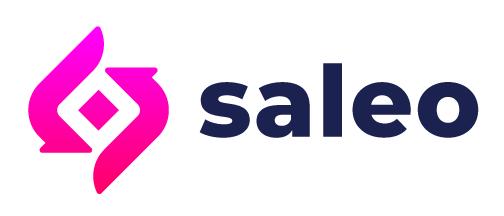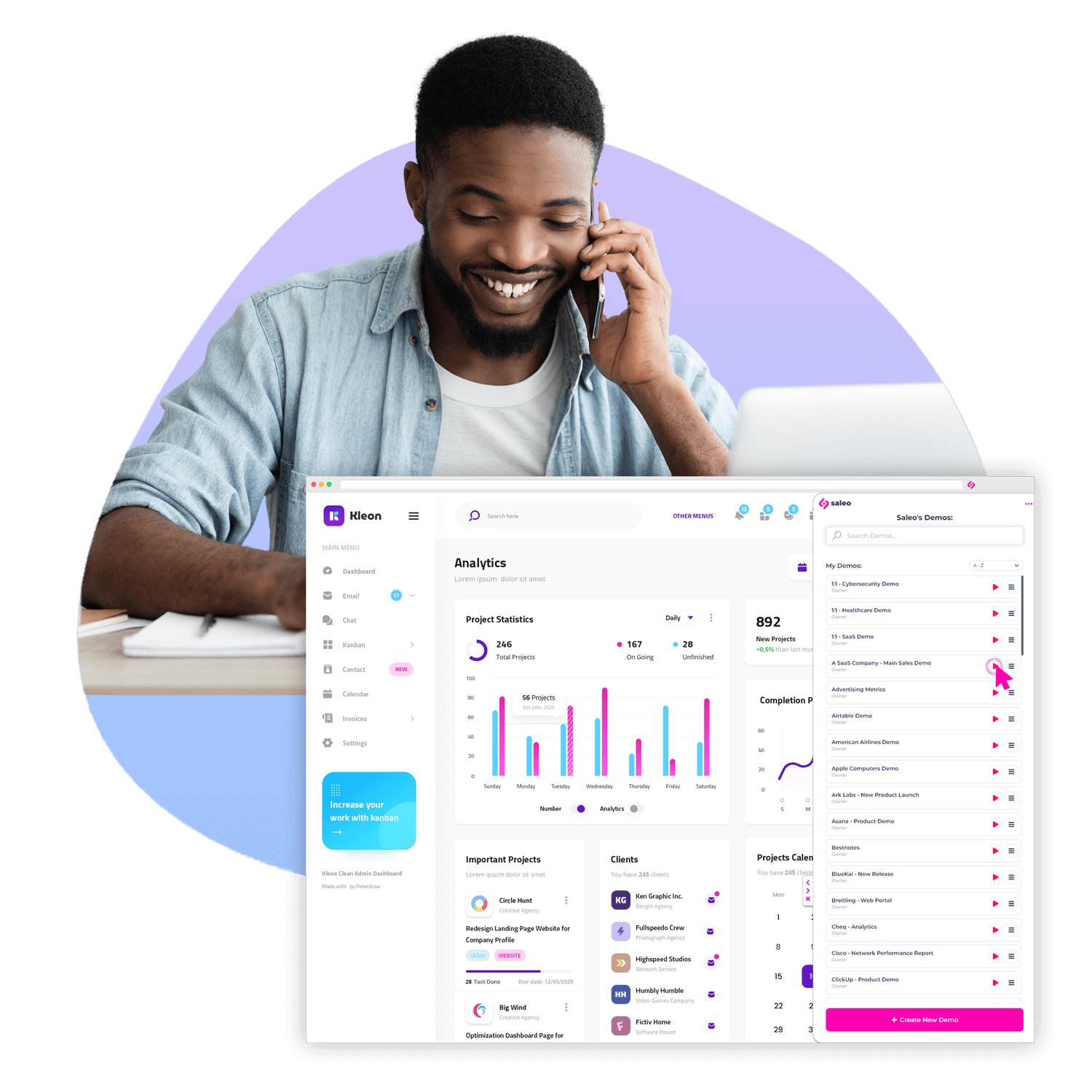Sales and marketing is essential for any business hoping to increase their revenue. However, sales and marketing for SaaS look different from what most companies are used to. It requires its own set of strategies that follow the SaaS sales cycle and SaaS sales pipeline.
Fortunately, you don’t have to go into SaaS sales and marketing blind! We’re here to shed light on the benefits of SaaS sales strategies and provide a sales and marketing strategy for SaaS guaranteed to increase your revenue.
Without further ado, let’s discuss how to improve your sales with SaaS sales strategies!
Sales and Marketing Strategy for SaaS: The Benefits
Sales and marketing for physical products differ from sales and marketing for SaaS.
SaaS companies face two big issues.
First, SaaS (software as a service) isn’t a physical product that consumers can hold and test. Instead, SaaS relies on interactive demos to demonstrate the service features to the client.
Second, SaaS sales are long-term sales. Traditional sales only require the consumer to pay for the product one time. SaaS is a long-term sale and consumers must be convinced to pay for the service monthly, quarterly, or annually – preferably for years, while they need the software service.
Adopting a SaaS-focused sales and marketing approach accounts for these differences, providing your company with SaaS-specific sales strategy benefits.
Encourages Product Testing and Free Trials
SaaS sales and marketing take a distinct software sales approach, one that encourages interested parties to try the product through an interactive product demo. SaaS strategies also encourage users to take advantage of free trials, which are extremely beneficial in software sales.
In both these cases, the SaaS approach lets the software features do the talking, which is much more effective at gaining a paying customer than only listing the software features.
Lower Entry Costs For Consumers
Subscription fees lower the entry costs for customers and make a much more attractive marketing packaging. If we followed the same product and sales strategies of traditional marketing, users would have to pay the full product fee in one go.
For subscription-based software, charging a lifetime’s worth of software subscription fees in one go just isn’t viable.
SaaS sales and marketing understand this intrinsically and create subscription fees and tiers to spread out costs and entice customers with much lower entry costs.
Retention Focused Sales and Marketing
Lastly, SaaS and physical sales and marketing strategies have different end goals. As mentioned above, SaaS aims to build a long-term exchange with clients i.e. the sales and marketing focuses on retention. Traditional strategies focus more on attracting customers than keeping them.
Yes, you’re still going to work on attracting new customers. SaaS companies also need to grow their customer base.
But you’re going to focus much more on customer retention with SaaS sales and marketing than you would with traditional forms of marketing. The combination of attracting customers and working to retain them will work wonders for your brand and profit margins.
Sales and Marketing Strategy for SaaS | 7 tips
It’s clear why you need a more SaaS-focused approach to selling your software. But how do you do it? These tips will help you pinpoint the perfect customers and reel them in for lifelong partnerships.
- Create Accurate Customer Profiles
If you’re new to customer profiles or personas, it’s the process of researching your ideal customer and tailoring the SaaS sales and marketing to their tastes. If you’re already running your sales based on a customer profile and it’s not working, it means the profiles aren’t accurate.
Use media analytics, CRM (customer relationship software), and your current customer pool to create a mock-up of your ideal customer.
Consider key demographics:
- Company or individual
- Location
- Income
- Gender
- Age range
- Most used product features
When you know who wants your product, you can tailor your sales copy and product demos to highlight the features they want. There is no use trying to sell chocolate to someone who wants sour candy, is there?
- Research SaaS Competition
Sun Tzu said it best: “If you know the enemy and know yourself, you need not fear the result of a hundred battles.”
Observe your SaaS competition to establish the following key points:
- What Is Working: Researching regional and national competition will give you a clear indication of what is working with the SaaS market in your niche.
- What They Offer: Next, use the competition research to see how your competition is tapping into the consumer base. What do they offer that makes them an attractive option for SaaS purchasers?
- Create A Competitive Edge: Once you know what people want and what your competition is offering them, you can create a sales and marketing strategy that puts you at an advantage. Whether it be your pricing or sought-after features your competitors don’t offer, use the research to craft your competitive advantage.
- Choose Your Marketing Channels Wisely
There are dozens of ways to market your SaaS. Popular options include:
- Ebooks
- Website blog posts
- Affiliate marketing
- Social media
- Sponsored adverts
- Webinars
- Influencers
- Email marketing
However, spreading yourself across all these channels as a beginner is time-consuming and resource-intensive.
Instead, consider the following:
- Budget: Most companies spend between 12 and 20 percent of their revenue on marketing. You should be no different. Of course, as you get started, the amount will be lower. But there should still be a marked effort and budget allowance to grow your customer base.
- Marketing Channels & Demographics: The first tip had you creating customer personas for your ideal client. Use these profiles to find the right marketing channels. If you’re marketing toward business people between the ages of 25 and 40, you’d focus your efforts on LinkedIn over TikTok, right? Pinpoint the channels worth your time and money.
- Expand As You Grow: When you start, keep your marketing focused on low-cost marketing channels. Then, as your brand and your revenue grow, increase your marketing budget and allocate resources to other channels. Slowly continue this trajectory.
- Establish Domain Authority
SaaS presents a great opportunity to establish and grow your domain authority while marketing your software. You can create content and collaborate with other companies in your niche while creating a positive feedback loop that increases your SERP ranking.
But to establish your domain authority, you need to understand Google and its algorithm. There are many tried and tested ways to increase your ranking.
SEO (Search Engine Optimization) is the act of optimizing web content to increase its visibility on rankings. Links are also extremely useful. Internal and external links can help you build a network with your content and other, high authority content on the internet.
However, SEO, links, and other SERP-enhancing measures don’t mean much without quality content. If you post content that is relevant, well-written, and fresh, users are more likely to engage with and share the content – which directly affects your SERP.
And the higher your SERP, the more clicks, engagement, and SaaS sales you’ll make.
Produce high-quality content, collaborate with relevant parties in your niche, and never stop learning about SEO measures.
- Offer Free Trials
Free trials are a must for SaaS. It’s low commitment and allows your software to showcase its features. Users can use the free trial to get a feel for your software and do so on their own time.
That being said, the trial period is an important consideration. The most common trial periods for SaaS are 7 days, 14 days, and 30 days. Some offer a few months trial period, but this is usually only viable for large corporations who are making enough to cover the expense.
As a general rule, the more complex your software is, the longer the free trial should be. There needs to be enough time for the users to get a feel for the software.
So, 7 days for simple, easy-to-use software. 14 days for software with more features and a bit of a learning curve. And 30 days for complex software with a lot of features and a steep learning curve.
- Create Payment Tiers
SaaS payment tiers come in two main forms.
First, different tier prices for different features. A good example is a Basic, Team, and Business model. For example, the Basic model offers limited features but at a lower price. Higher tiers increase feature capabilities and the price increases as well.
The second is payment options. Offer monthly, quarterly, and annual subscriptions. The longer the subscription period, the lower the monthly cost.
For example, users who choose monthly pay $5 every month. The user who chooses the annual option pays $42 up front, which is more expensive. But in the long run, they’re only paying $3.50 a month.
Both these options open your software up to more people and provide a payment option for every niche, which means higher earning potential for your company.
- Interactive Sales Demos
The power of interactive sales demos cannot be overstated. Unlike traditional sales demos, where the client may only get a video of the software features, an interactive sales demo combines and speed-runs software trials, marketing, and tutorials.
You also don’t need to build your own sales demo from scratch. Sales demo software like Saleo allows you to create engaging, data-driven, custom demos that drive sales.
Conclusion
SaaS sales and marketing are different from the marketing associated with physical products. Advertising a service can be difficult and you need to entice users to pay for a service not once, but month after month.
Fortunately, there are ways to improve your SaaS sales and marketing. Use the above strategies to showcase your brand and software, grow your online authority, and steadily increase sales.
No SaaS sales and marketing strategy is complete without an interactive sales demo. Partner with Saleo to create customizable, data-driven, and engaging sales demos guaranteed to win customers over. Get started and request a demo today!





